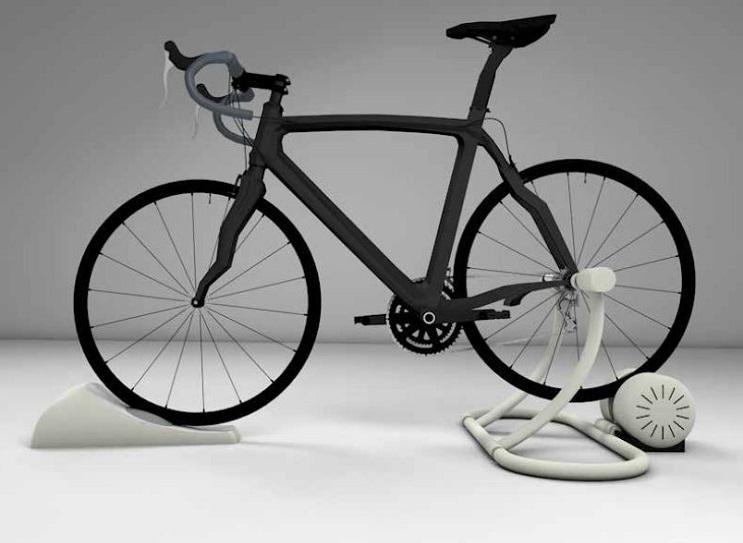
Picture the ability to hop on any bike, pop on a VR headset, and cruise through an enchanted ruin, or through a land that looks so close to George R.R. Martin’s frigid North that it borders on copyright infringement. Serious cyclists and athletes are interested in the training possibilities; gamers are interested in having a new way to interact with virtual worlds.
The incorporation of Oculus Rift is a major selling point, but the Widerun setup also runs on Samsung Gear VR and the do-it-yourself Google Cardboard, as well as traditional smart screens, and the team is still expanding compatibility. The key to the design is the trainer base, which can be adjusted to fit all bikes with 26-29 inch wheels. By reducing or increasing resistance, the trainer base works in tandem with the virtual environment to simulate changes in elevation. Combine that with the handlebar-mounted steering input (it wirelessly connects to the base) and the result is a simple bike trainer with a familiar triangular shape.
But it can take you to any number of virtual worlds, via the Widerun online store.
Unlike the aforementioned electric trainers designed to simulate specific rides on tiny little screens, users can plop down any bike on the Widerun. Yes, any bike, so no need for both an Oculus and a giant bike-like contraption that has no other use besides training and taking up a corner of your den. VR bike trainers or training systems will need to be more flexible to remain competitive with the Widerun.

Some readers who own VR headsets mention the problems that come with “moving” about in a virtual world. First, you’re not really moving. Or at least, the virtual movements might not match up with your actual physical movements, which can cause nausea. The Widerun team took a good look at that issue, and by adjusting the feedback of the trainer’s resistance and steering module to perfect synchronicity, they managed to keep riders from losing their equilibrium.
Cruise through a land so close to George R.R. Martin’s frigid North that it borders on copyright infringement.
Even without a VR headset, the Widerun still puts all the tiny built-in screens of standalone VR bike trainers to shame, though if a cell phone is all that’s available it will serve, too. The base communicates with Bluetooth devices, which includes a host of smartphones and TVs.
Once the trainer is set up, riders can choose from an increasing library of locations to bike through, some with 360-degrees of freedom. Some will be free, others available for purchase. Four locations are currently listed to launch with the device: The Great Wall of China, which has a soft, hand-drawn look to its cover, Toon City, bright and blocky in Minecraftian style, Four Seasons, which seems self explanatory, and Where There’s No Light Run Fast, which looks to be a zombie survival scenario.
Continued expansion of the library means users won’t get bored too quickly. In addition, Widerun is offering software development kits to all backers via Kickstarter.
Widerun has made Kickstarter Staff Pick. The campaign will end May 2, and as of the time of this writing it’s a little less than half way to its $44,475 goal. 75 Backers pledging £275 or about $408 will receive a Widerun with the steering module, unlimited virtual worlds and access to the performance tracker. It is unclear how many of that bargain pledge bracket still remain.


